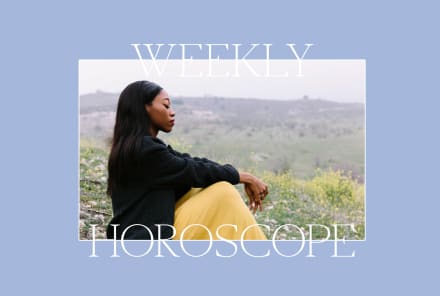Advertisement

When you are fresh from heartbreak, it may be hard to see what lies in the future. It may seem impossible to think you can trust again. If you were deeply in love, the end of a relationship can feel like a death. There is something happening on a much higher level when life delivers these events that seem so shattering. It’s at these times that we stand at a crossroads. Are we going to keep our hearts open? Are we going to trust that life is not just the light but the dark, also? Will we see the continuum of experience and move through it with self-love and grace?
The fragility you feel after loss is real, but the potential for healing and renewal is even stronger.
We all have a story. It is the story of our past, our present, and the journey we are taking toward our future. The relationship you have to that story is incredibly important. No matter what it is, you have to embrace it. If you judge and reject who you are, where you’ve been, and the person you want to be, you can’t connect with another person. Here's how to start learning to love your story:
1. Feel (all) your feelings.
Repressed grief can fester and manifest as anger, depression, and disconnection from your authentic self. Osho, an East Indian spiritual teacher, said, "If you’re going to be something, be it 100 percent." So, if you are going to be angry, be 100 percent angry. If you are going to be happy, be 100 percent happy. Whatever you feel or do, experience it 100 percent. There is great wisdom in that concept. If you want to eliminate something, acknowledge it 100 percent, then release it 100 percent.
2. Practice the art of detachment.
It is not easy to lose someone or something, but if you want to learn how to process loss in a way that leaves you stronger and more evolved, you must practice the art of detachment. Detachment does not mean you are uncaring, that you go on your merry way with ease, or that you never experience grief. Detachment is about acknowledging all of your feelings but then letting them go—in the same way you let the person or thing that you lost leave with acceptance. You cannot hold on to what is impermanent, which is everything in your life. Your mind is all that you can control.
3. Make friends with impermanence.
When something we thought was constant and unshakable changes, and we are shocked and devastated, sometimes questioning the belief system we held leading up to the shift can be helpful. It is a mistake to think that things will not happen that we don’t want to happen. Impermanence may seem harsh, but it is an embodiment of the beautiful nature of our existence. You must make transience your friend. Be mindful of your sadness and grief. Missing someone or something is part of the process, but how you carry on is just as important.
4. Have a mindful anchor.
Losing someone or something big can catapult us back and forth from the past, where we have our memories, to the future, where we grapple with the absence of that person or situation. Having a mindful anchor—that centers you—can provide a structure to help you stand upon. Mindfulness is about focusing on the present moment. If we integrate its practice into our daily lives, we are better equipped to face grief and start the healing process. Going through the stages of grief with the tools of awareness and mindful observation will help you fully feel, accept, and move forward when there is loss. When we are mindful we allow every sensation and emotion to move through us, in whatever way they need to manifest.
5. Be willing to mend your heart.
The fragility you feel after loss is real, but the potential for healing and renewal is even stronger. If you want to live life as fully as we all deserve to, you have to muster the willingness to mend your heart. It might be glued together for quite some time, but you can start to experience happiness, hope, and connection with it in that state of repair. And remember, often it is through the cracks that light shines through the brightest.
Love can be deeper than the ocean, but love is not about needing someone else to be alive or to be happy. We each have our stories. We cannot grasp on to a different reality from the one that is meant to be. Life is gain and loss. And accepting this is the path to self-love.
Watch Next
Enjoy some of our favorite clips from classes
Enjoy some of our favorite clips from classes
What Is Meditation?
Mindfulness/Spirituality | Light Watkins
Box Breathing
Mindfulness/Spirituality | Gwen Dittmar
What Breathwork Can Address
Mindfulness/Spirituality | Gwen Dittmar
The 8 Limbs of Yoga - What is Asana?
Yoga | Caley Alyssa
Two Standing Postures to Open Up Tight Hips
Yoga | Caley Alyssa
How Plants Can Optimize Athletic Performance
Nutrition | Rich Roll
What to Eat Before a Workout
Nutrition | Rich Roll
How Ayurveda Helps Us Navigate Modern Life
Nutrition | Sahara Rose
Messages About Love & Relationships
Love & Relationships | Esther Perel
Love Languages
Love & Relationships | Esther Perel


















